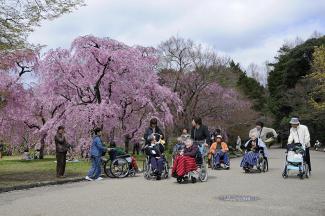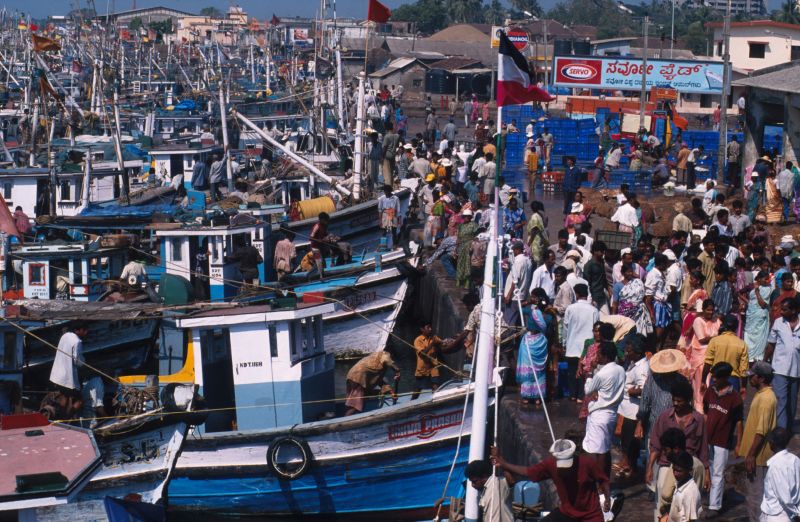Population trends
More and more, older and older

In 2018, for the first time in human history, the worldwide number of people over the age of 64 exceeded the number of children under the age of five. According to UN estimates, the number of people of retirement age will double once more in the next 30 years. The older age groups would then also outnumber people between 15 and 24. In any case, the world population will definitely keep getting older.
This information will hardly surprise people in Italy, Portugal or Germany. In these countries, the median age, which divides the population into two equal groups, is above 45. Those are the peak figures in Europe, the demographically oldest world region. Japan, however, is the oldest country – with the median age of 48.
The fact that people are getting older and older is causing problems, especially in places where the ratio of elderly people to people of working age is increasing. The latter group must generate the funds needed to care for the pensioners. The question of how social and pension systems can best adapt to an ageing population is a hot topic in the global North. Finding sustainable solutions is becoming ever more urgent. The ageing of the baby-boom generation means that difficult times lie ahead for the countries concerned.
The ageing of society does not only have impacts on the global North, however. It increasingly affects newly industrialising and developing countries. Since life expectancies have risen in Latin America, North Africa and the Middle East in recent decades, the share of people over 64 there is expected to double by 2050. National governments face the challenge of expanding their health-care systems and social services so they will have the capacities to meet the needs of a growing number of older people.
Population ageing is the result of a development path that is called the “demographic transition” (see box). At the end of this process, populations start to shrink. By 2050, 55 countries will experience a population decline of at least one percent. Many of them are in Europe. In absolute terms, however, China is expected to see the greatest loss. According to UN estimates, this demographic giant with a current population of 1.4 billion – more than the entire African continent – will have about 37 million fewer residents by the middle of the century. The consequences of China’s one-child-per-family policy are forcing it to rise to new challenges (see article by Felix Lee in Focus section of D+C/E+Z e-Paper 2020/04).
Generally speaking, the world population will grow more slowly in the future than it did in the past. Since the mid-1960s, the global population growth rate has been halved. It used to be two percent, but has dropped to one percent. However, today significantly more people of reproductive age live on earth than six decades ago. Therefore, the world population is currently still growing by about an annual 80 million. By 2050 it is expected to grow to a total of 9.7 billion people – an increase of around 2 billion in just three decades. Growth will certainly be concentrated primarily in South and Central Asia as well as in Africa. Over half of the global population growth in the next 30 years will occur in sub-Saharan Africa, which will add 1 billion people during this period.
Dealing with the transition
A growing population doesn’t pose a problem as long as the increasing number of people can be well cared for. That precisely is the challenge in sub-Saharan Africa: many countries in this world region do not even have enough food, sanitary facilities, hospitals and schools today. Moreover, there is an almost universal shortage of jobs, so people lack attractive prospects and cannot enjoy adequate standards of living (see article by Samir Abi in Focus section of D+C/E+Z e-Paper 2020/04).
The main reason for Africa’s rapid population growth is that fertility rates continue to be high across the continent. Death rates have fallen sharply, but the decline of fertility rates is significantly slower than it was in other world regions. Over the course of their lives, women in Africa currently give birth to 4.5 children on average, almost twice as many as in any other part of the world.
The average figures mask the fact that the things differ very much from country to country. In some countries the demographic transition has advanced considerably. That is true of Mauritius and the Seychelles, two comparatively well-developed island countries, or Morocco and Tunisia in North Africa. In these places, the fertility rate has dropped below 2.5 children per woman.
Other countries are currently experiencing a rapid decline in fertility rates because of prudent policies. Ghana, for example, managed to increase the incomes of smallholder farmers by investing in agriculture, and that has had a positive impact on children’s health. Combined with large investments in education, such policy interventions changed people’s attitudes about the ideal family size. Women now have 3.9 children on average. The same trend is evident in Ethiopia, where the total fertility rate fell from over seven children per woman in the 1990s to slightly more than four children today. The reasons include better health care, easier access to contraception, improved education and more employment opportunities for women.
These examples show that there are some positive trends in Africa. Other countries can learn from success, accelerating their own demographic transition by following the trailblazers’ policy examples.
Lower fertility rates would boost prosperity in sub-Saharan Africa. Caring for small children requires huge efforts from families as well as spending on schools and other public services. In the medium term, a decline in fertility rates would change the age structure which could benefit African economies. After all, as the number of children being born continues to fall, subsequent cohorts become smaller, and the population bulge shifts to people of working age. This means that many people can be productive while the number of children and older people, who need to be taken care of, is small. Provided there are enough jobs available, this window of opportunity can be transformed into an economic upswing, a so-called “demographic dividend” (see Box Samir Abi in Focus section of D+C/E+Z e-Paper 2020/04 ).
If things go well in the future, the demographic development could therefore give African countries a competitive advantage over the global North’s ageing societies, where the number of people of working age is declining. For that to happen, however, governments in sub-Saharan Africa would have to make sure that fertility rates drop. They need to implement measures in relevant areas such as health care, education and employment. Where the number of children stays high, there will be no demographic dividend.
By contrast, the countries of the global North must deal with both population ageing and shrinking. They need to find ways to keep their economies and welfare systems running at the same time. Migration would help to cushion both trends. So far, however, the advanced nations are displaying discomfort with accepting immigrants. The demographic transformation may very soon force them to admit that they actually need immigrants – with increasing urgency.
Alisa Kaps is a researcher at the Berlin Institute for Population and Development and is primarily concerned with the demographic challenges of sub-Saharan Africa.
kaps@berlin-institut.org










